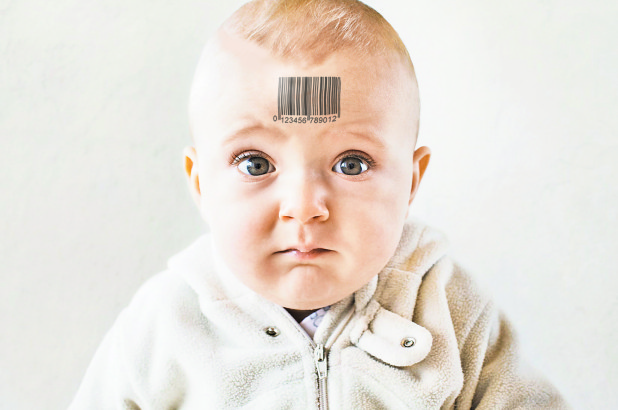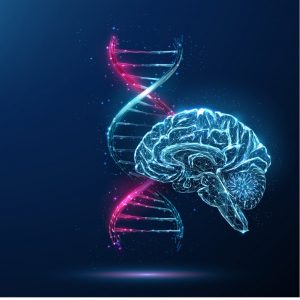Similar to flying cars and memory-erasing neuralyzers, genetically-modified babies might originally sound like something straight out of a futuristic sci-fi film. However, with the rapid advancements of technology in the twenty-first century, “designer babies,” or babies who have been genetically engineered “in vitro” for specially selected characteristics, are already here. In late 2018, a Chinese scientist, He Jiankui, announced the birth of twin girls, Lulu and Nana, whose DNA he claims to have modified using the gene-editing technique CRISPR to give the baby girls HIV resistance, a trait fewer than 1% of people are estimated to have.1 Since Jiankui’s introduction of his designer baby girls into the media, concerns have been raised regarding the ethics of the unusual practice. Designer babies have become an important subject in bioethical debates and questions have been raised about implementing limitations regarding designer babies in the future.
“In vitro fertilization,” or IVF, is a process in which fertilization of the egg takes place outside of the woman’s body. The participant’s ovulatory process is stimulated and monitored, and, when the time is right, an ova or ovum, or the egg, is extracted from the ovaries and fertilized with sperm in a laboratory. The zygote, or fertilized egg, then undergoes embryo culture for two to six days. After this period of time, the zygote is implanted into the participant’s uterus, where it is free to develop and grow as a normal fetus. IVF is usually only frequented by parents who are at risk of having a child with a genetic disease, such as carriers of a monogenic diseases or of chromosomal structural aberrations, or, alternatively, by parents who suffer concurrent infertility or recurrent miscarriages. Preimplantation genetic testing is typically conducted after in vitro fertilization, and involves checking the embryo for any genetic defects. This process is formally called “preimplantation genetic diagnosis.” Only the embryos that are free of defects are finally replaced into the womb.2 IVF in the U.S. averages around $1o,ooo to $15,000, not including additional costs such as medication, genetic testing, etc.3
Though a fairly new subject, the concept of designer babies has been around longer than one would think. One early case of human genetic manipulation took place in 1996, over twenty years ago, when Scott and Monique Collin visited the Genetics & IVF Institute in Fairvax, Virginia. The couple, after the birth of their two sons, wanted to ensure that their third child was a girl, and found the answer to their problem in in vitro fertilization. The team of researchers at the Genetics & IVF Institute, adapting a technique used on livestock, took advantage of a basic rule in biology: girls have two X chromosomes, while boys have one X and one Y chromosome. Because mothers only have two X chromosomes, it’s in the father hands, or rather in the father’s sperm, to bring either an X or Y chromosome to the table, determining the baby’s sex. However, Y chromosomes occur less frequently than X chromosomes. The doctors used this to their advantage and used a light-sensitive nontoxic dye to stain the sperm’s DNA, organizing the sperm by gender before a successful artificial insemination. Prior to the Collins’ case, in vitro fertilization was performed only to address certain medical conditions or diseases.

The Collins’ designer baby procedure entered the public vernacular when they were featured in Time Magazine’s 1999 article, “Designer Babies.” The procedure was met with both praise and criticism. Dr. Zev Rosenwaks, director of the Center for Reproductive Medicine and Infertility at Cornell Medical Center in New York City, responded, “Our view at the moment is that these techniques should be used for medical indications, not family balancing.” Biotechnology critic Jeremy Rifkin, appalled by the concept, added, “It’s the ultimate shopping experience: designing your baby. In a society used to cosmetic surgery and psychopharmacology, this is not a big step.4
CRISPR (pronounced “crisper”) is shorthand for CRISPR-Cas9. CRISPR technology is a powerful tool used by researchers to easily alter DNA sequences and modify gene functions. It allows for the correction of genetic defects, preventing the spread of diseases, and aids in the improvement of crops. CRISPRs are strands of DNA—the protein Cas9 is an enzyme capable of acting as a pair of molecular scissors, one that can accurately cut strands of DNA. Although already fairly powerful, this technology was further adapted by the natural defense mechanisms of bacteria and archaea. These microorganisms use CRISPR-derived DNA and Cas9 protein to prevent attacks from viruses, which they do by cutting up and destroying the DNA of an invader. When these components are transferred to a more complex organisms, it allows for the manipulation, or editing, of genes.5 CRISPR-Cas9 allows the ability to “edit” the DNA sequence of a defective gene by deleting or inserting bases at the zygote stage of embryonic development, potentially ridding not only that person, but also their progeny, of a particular genetic disease.6
Although the use of CRISPR technology to modify embryos, eggs, or sperm is banned in the United States, it is permitted in China. In November 2018, Chinese scientist He Jiankui modified the embryos of seven couples, all of which the males had HIV, during in vitro fertilization. His goal was to remove the pathway through which HIV enters the body by ordering CRISPR-Cas9 to disable a gene called CCR₅, thereby giving the babies HIV resistance. From this procedure came the aforementioned twin girls under the pseudonyms Lulu and Nana.7 Surely this was an accomplishment for Jiankui, but his experiment raised questions and concerns within the science community. Some felt that, when using this technology, there was always the risk of genetically altering genes that weren’t supposed to be modified. Many also emphasized the fact that people with deficiencies in CCR₅ are more susceptible to West Nile Virus and Japanese encephalitis. However, when met with backlash over his controversial project, Jiankui replied, “I understand that my work will be controversial, but I believe families need this technology, and I’m willing to take the criticism for them.”8 Jiankui also spoke on the discrimination HIV-positive people face in China. Despite the backlash, not all people were critical of his project. George Church, a Harvard University geneticist, believes Jiankui’s work was justified, as HIV is a major and growing public health threat. “As long as these are normal, healthy kids, it’s going to be fine for the field and the family,” Church added.9

Jiankui’s project, along with every other case of genetic modification, received a lot of questions and concerns about whether or not it could be morally defended. Although Jiankui’s case only involved disabling CCR₅ and the Collins’ case only involved the selection of gender, they raised issues such as using CRISPR for cosmetic means as well, like choosing eye color, hair color, or height, which many didn’t find morally ethical. The issue of a wider class gap in society was also raised. If genetic modification became a realistic and accessible medical practice, it would create great division between those who could afford a designer baby and those who couldn’t. People fear that the economic division will soon grow into genetic division, with social distinctions and picture-perfect features separating enhanced individuals from unenhanced individuals. The 1997 sci-fi film Gattaca explores this by depicting a society in which only genetically modified individuals, the “valids,” have a place in society’s upper class, whereas those conceived without the aid of genetic selection, the “in-valids,” do not. While these concerns and fears are very valid, the benefits of genetic modification well outweigh the risks.

In a country with already very distinct divisions in social status, the practice of genetic modification would do little to no damage on social class. Nobody wanted to prohibit the introduction of luxury cars or designer bags in America, though they are clearly very ostentatious displays of wealth. Despite the possibility of designer babies becoming just another possession the rich and wealthy can boast about, genetic modification becoming a regular practice in the medical field would only allow for growth in knowledge about genetic diseases. The Council on Ethical and Judicial Affairs released a statement in 1994 in support of using genetic modification to treat, cure, or prevent genetic diseases, but that selection based on benign characteristics is unethical.10 While genetically engineering children to fit into the mold of a “perfect” child is undeniably selfish and unscrupulous, using CRISPR technology for medical advancements is justifiable and defendable. As mentioned before, Jiankui only genetically modified the twin girls’ DNA to remove the pathway through which HIV enters in order to give them HIV resistance—something that wouldn’t have been possible had the children been conceived naturally. Bioethicists also argue that parents have a right to prenatal autonomy, which grants them the right to decide the fate of their children.11 Parents who have lived difficult and expensive lives due to disease should be able to ensure that the same terrible disease isn’t inherited by their offspring. Genetic engineering will give thousands of children the opportunity to live a long and happy life free of the burden of any genetic disease, such as AIDS, blood disorders, muscular dystrophy, and even cancer.12
In the case of modernizing CRISPR technology, the possibility of preventing or reducing the risk of genetic disease far outweighs its moral implications. Genetic engineering, if not used with superficial motives, has the potential to ensure the health of an entire population of children sick with inherited disease. An ethical point of view should not halt the advancements of technology and overall knowledge of biology.
- Carly Stern, “Meet the Chinese Researcher Behind the ‘World’s First Designer Babies,’” OZY (blog), November 28, 2018, https://www.ozy.com/need-to-know/meet-the-chinese-researcher-behind-the-worlds-first-designer-babies/90908. ↵
- Karen Sermon, “Preimplantation genetic diagnosis,” The Lancet 363, no. 9421 (2004): 23. ↵
- Rachel Gurevich, “How Much Does IVF Really Cost?,” VeryWellFamily (blog), March 20, 2019, https://www.verywellfamily.com/how-much-does-ivf-cost-1960212. ↵
- Michael Lemonick, “Designer Babies,” TIME magazine, January 11, 1999, http://content.time.com/time/magazine/article/0,9171,17696-1,00.html. ↵
- Aparna Vidyasagar, “What is CRISPR?,” Live Science, April 20, 2018, https://www.livescience.com/58790-crispr-explained.html. ↵
- Daryl F. Sas and Hannah M. Lawrenz, “CRISPR-Cas9: The Latest Fashion in Designer Babies,” Ethics and Medicine: An International Journal of Bioethics Vol. 33, no. 2 (2017): 81. ↵
- Carly Stern, “Meet the Chinese Researcher Behind the ‘World’s First Designer Babies,’” OZY, November 28, 2018, https://www.ozy.com/need-to-know/meet-the-chinese-researcher-behind-the-worlds-first-designer-babies/90908. ↵
- Carly Stern, “Meet the Chinese Researcher Behind the ‘World’s First Designer Babies,’” OZY (blog), November 28, 2018, https://www.ozy.com/need-to-know/meet-the-chinese-researcher-behind-the-worlds-first-designer-babies/90908. ↵
- Rachel Cocker, “Designer babies are not a health threat, says geneticist,” Daily Telegraph, March 16, 2019, https://www.pressreader.com/uk/the-daily-telegraph/20190316. ↵
- National Center for Biotechnology Information, 1994, s.v. “Ethical issues related to prenatal genetic testing. The Council on Ethical and Judicial Affairs, American Medical Association.” ↵
- National Center for Biotechnology Information, 2002, s.v. “Autonomy and freedom of choice in prenatal genetic diagnosis.” ↵
- Clara Rodriguez Fernandez, “Seven Diseases That CRISPR Technology Could Cure,” LABIOTECH (blog), June 25, 2018, https://labiotech.eu/tops/crispr-technology-cure-disease/. ↵



65 comments
Mara Martinez
In middle school I read a book about how a community would genetically design the babies for whatever specific class they were to be born into. This is what I feel the world will eventually lead to. However I think if it gets used correctly and people use this for a evolutionary purpose and to help get rid of diseases then this could be helpful. Overall those who don’t have the money won’t get the benefits in the end. Super interesting article.
Audrey Uribe
I think there eventually must be a line drawn between natural biological humans and technology. I think technology has benefited society just as much as it has hindered it. I’m on the fence about the eliminating diseases idea of genetic modification but I would never genetically modify my children’s genes. We don’t know the long term effects of using technology to modify people. It’s a very dangerous game that could even eventually be used as an elitism benefit.
Kelsey Sanchez
This article was interesting to read due to presenting what could be an advantage and disadvantage for gene editing. Reading this I can see that is both ethical and unethical. It is ethical in the way designer babies are used to removing diseases such as HIV and chromosome syndrome. However, is unethical if it not used for this purpose and is just used to create the baby the parents expect to have. It also seems that going through this could lead to sometimes not having a result expected since not all body responds the same way. Both parents and the baby can be at risk, but it would again depend on the outcome. It does not sound like a bad idea to put the baby through this process if they are trying to be protected, but I would recommend seeing what effects and impacts this experiment has brought.
Nicholas Robitille
This is a very complicated issue. On one hand, genetically engineered children could be seen as wrong and unnatural. On the other hand, doing so could make the populace healthier and lead to genetically evolving the population. Most of the controversy over this stems from fear of using this technology to alter the children superficially, making them look better or making them stronger, but I believe that if this genetic altering is used to eliminate possibilities for disease or genetic predispositions to bad health, then it is a boon to society rather than a bane.
Ivonne Orozco
This article was very interesting to read.It was very well detailed.I have heard this before , but I had never read something about it.I can see how it can be ethical and unethica depending on the case.For example if this occurs because they are trying to remove a disease from the baby, then I believe that it is ethical.This kind of situation/ topic makes me become open minded and I try to see it from both views.It reminds me how much technology and times have changed.
Addie Piatz
I had heard about this topic previously before reading this article but it defiantly helped be understand the whole concept more. I think this is a great idea for birth defects or disorders that could possibly affect the child in some way but if you’re doing it just to create your “perfect child” I think it ruins the natural and beautiful process that is having a kid in the first place.
Emmanuel Diaz
The concept of Designer Babies seems both ethical and unethical for me. I can see how one can use it to the advantage of having a healthy baby boy or baby girl if there are genetically passed down diseases or any scenarios of that sort that can affect the future baby and its health. However, i also feel that a baby is a gift from god who chooses how the baby will look and be even from before it is borned and should be treasured no matter what. I don’t feel that “Designer Babies” would ever be a thing for me unless I feel both my spouse and I find it to be helpful to us and to our future as a family but it will take a strong motivation to do so.
Jake Mares
From a neutral standpoint, I think that the science behind the process of creating humans like this is absolutely stunning. Every year we see new developments of humans climbing closer to unnatural things bringing debate over pretty much our humanity. Both sides seem to have legitimate arguments, but I think it comes down to personal ideas and values whether the ethics behind these breakthroughs are valid.
Arturo Canchola
This article does a very thorough job of discussing the potential consequences of gene editing. I’ve witnessed firsthand the editing of genes within animals, specifically mice, but the idea of doing it on humans to me seems to be a daunting task. There is a strong potential for this technology to be used for eugenics and other unfavorable actions — this article does a great job of addressing some of the issues that may arise from this technology.
Vania Gonzalez
For me genetic engineering is something that is completely up tp the parents because well that is going to be their child. Also I think at some point in genetic engineering they can eliminate certain things or cure certain things through this scientific discovery. I know many think it is wrong to play God but at the same time it is something that can benefit our society in the long run scientifically.